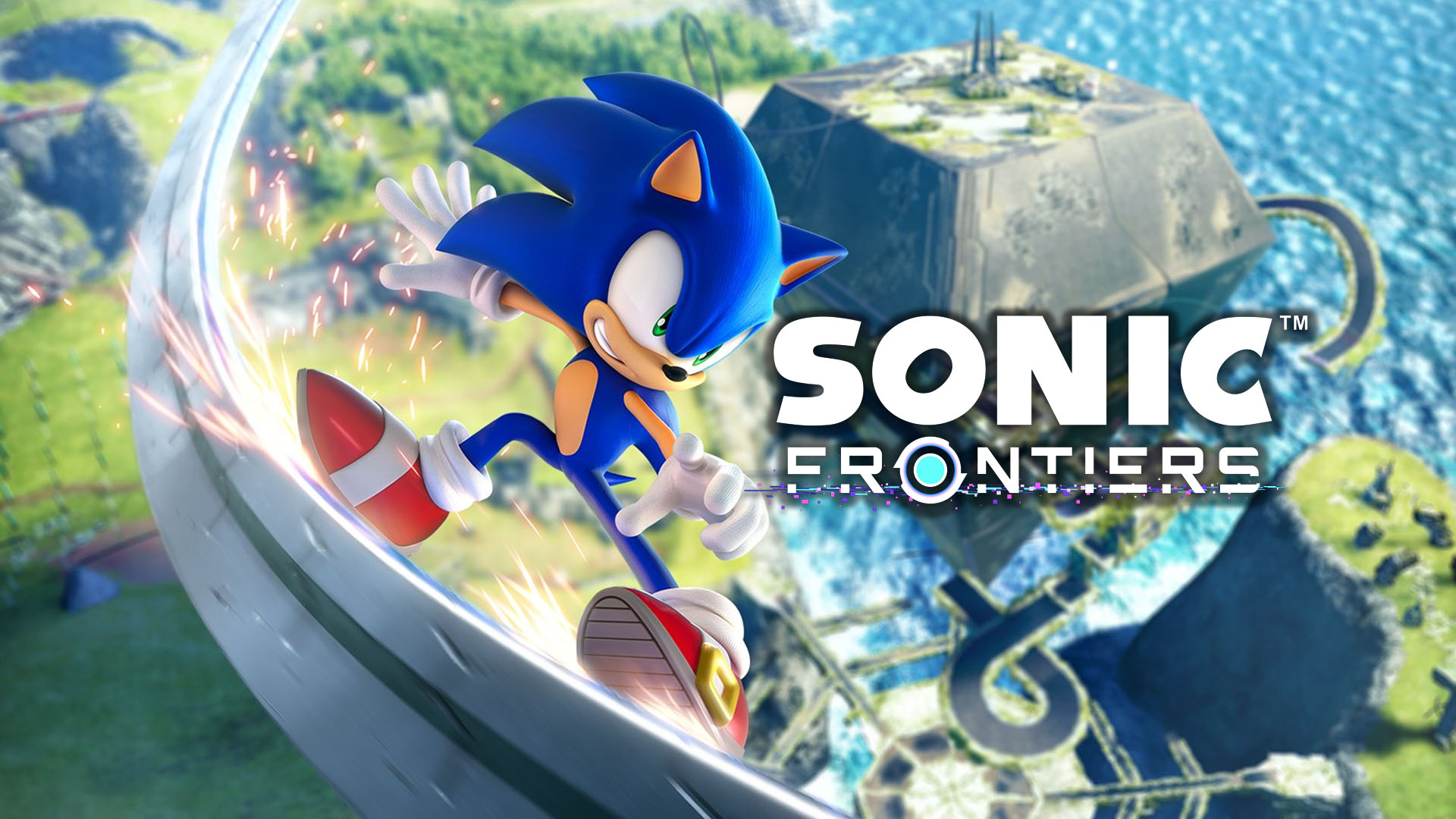
Does Sonic Frontiers have what it takes to make a good 3D Sonic game? The answer will depend on who you ask, but one thing most people can agree on is that most 2D Sonic games are enjoyable and it isn’t because they are fast.
The 16-bit Sonic the Hedgehog gamesrelied on momentum and careful platforming more than the gamer having to rush through stages. Speed kills and trying to play this way would lead SEGA’s mascot into a pitfall or dangerous trap.
3D Sonic games are hit or miss, but you could always expect them to emphasize speed and auto-targeting over accuracy. Sonic Frontiers aims to finally allow the blue blur to stretch his legs and give him enough space to reach top speeds never seen before. How does the final game pan out? Find out in our review!
This is a review coupled with a supplemental video review. You can watch the video review or read the full review of the below:
Sonic Frontiers
Developer: Sonic Team
Publisher: SEGA
Platforms: Windows PC, Nintendo Switch, Xbox One, Xbox Series X|S, PlayStation 4, PlayStation 5 (reviewed)
Release Date: November 8, 2022
Players: 1
Price: $59.99 USD
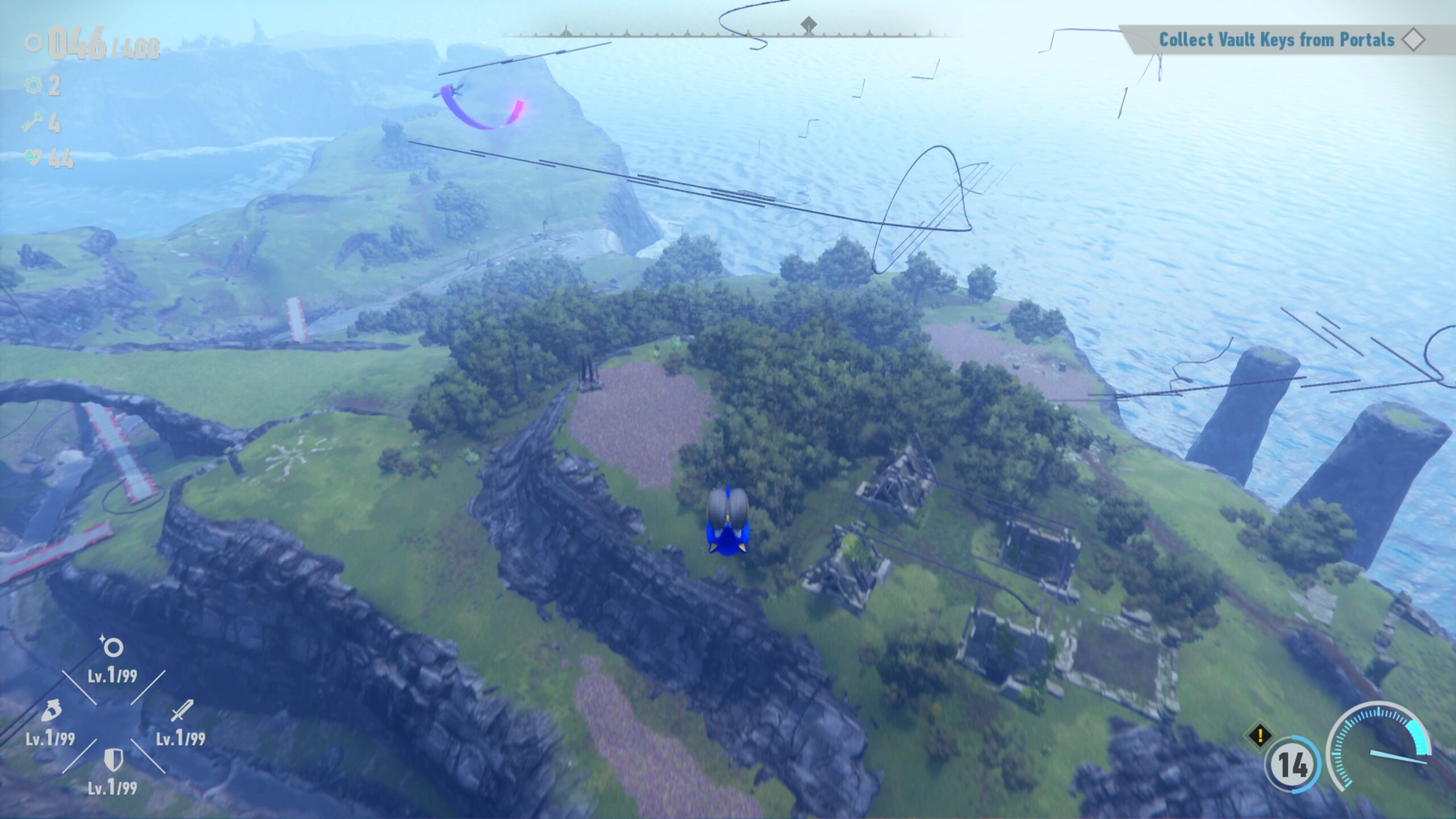
Being set loose in the big, wide, open-ended islands in Sonic Frontiers is a cathartic experience. Most 3D games constantly pressure gamers to constantly go forward, but this new formula offers ample opportunity to play the game at your own pace.
The soothing outdoors and lush greenery feels as fresh as a crisp spring morning. Dashing over the hills and feeling the soft loam and crunch of the grass under Sonic’s shoes is palpable. There is no mistaking that Sonic Frontiers takes a lot of visual cues from Breath of the Wild.
Everything looks good except for the messy, haphazardly placed railings and structures. These clash with the natural elements and they always seem to suddenly pop into existence. The draw distance is low for these assets and Sonic Frontiers would benefit from some kind of atmospheric effect that would make the structures appear gradually instead of instantly.
Sonic’s control has varied depending on the game he is in. In a lot of the 3D games, it can often feel like his speed is too much for a human to contain. With these new wide-open locales, Sonic finally feels like gamers can have enough leeway when cutting loose and hitting the pedal to the metal.
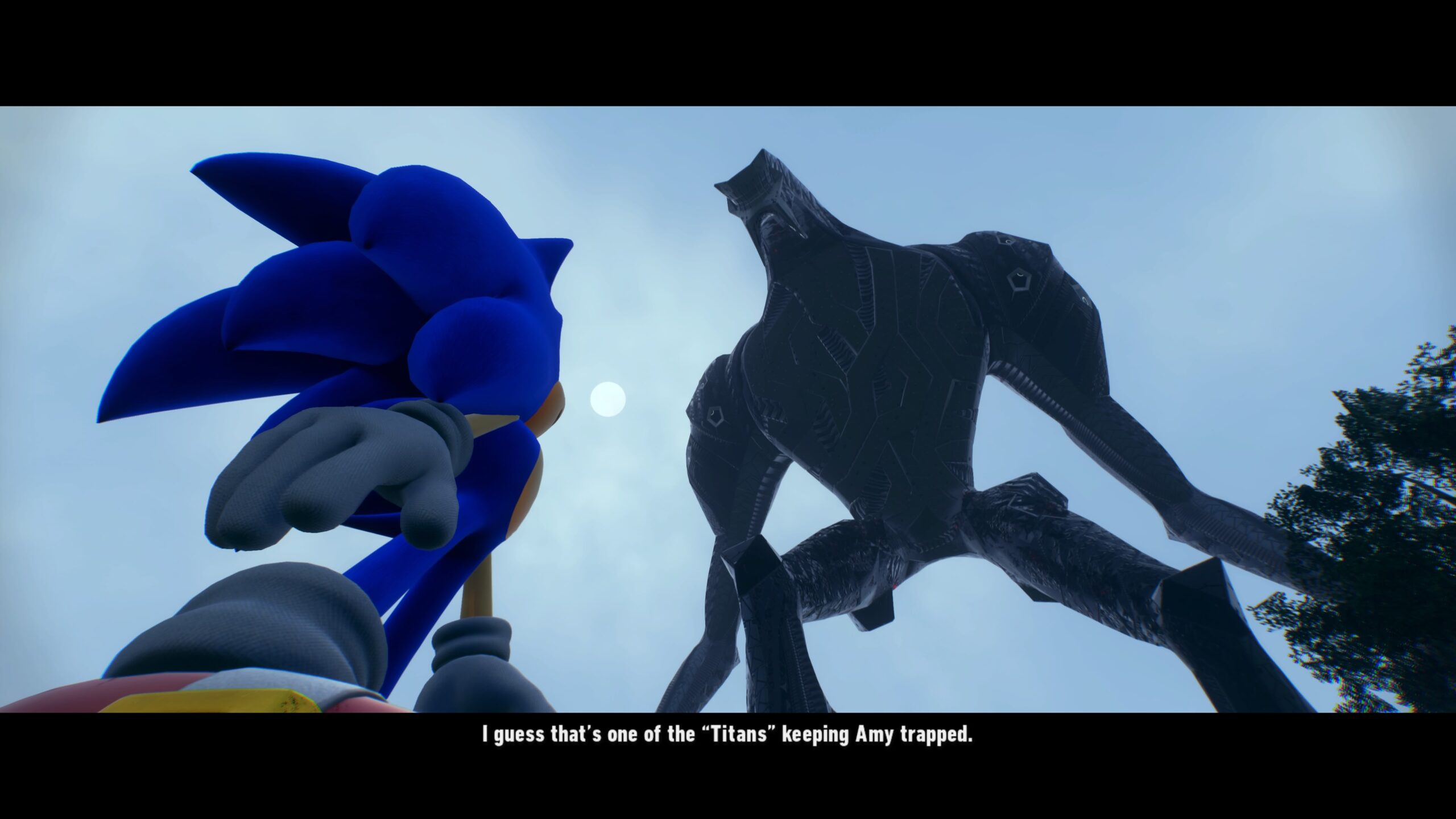
It’s not perfect; there is just no taming this hedgehog. Some quirks seemingly defy the laws of physics, which can be confusing. When hitting high speeds and leaping from a hill, momentum is lost and Sonic’s weight feels off.
A lot of the times when the sense of speed and momentum does feel more natural, it’s when Sonic connects to trigger points and he does his own thing in a scripted animation. Much of the actions feel contextual, rather than requiring the player to master the physics engine.
While there are some instances of emergent gameplay where gamers can circumvent the intended path, most of the time the collectibles in the islands have one or more scripted paths. There are a lot of different collectibles to find; often making Sonic Frontiers feel like a Banjo Kazooie game than a traditional boosting-style Sonic game.
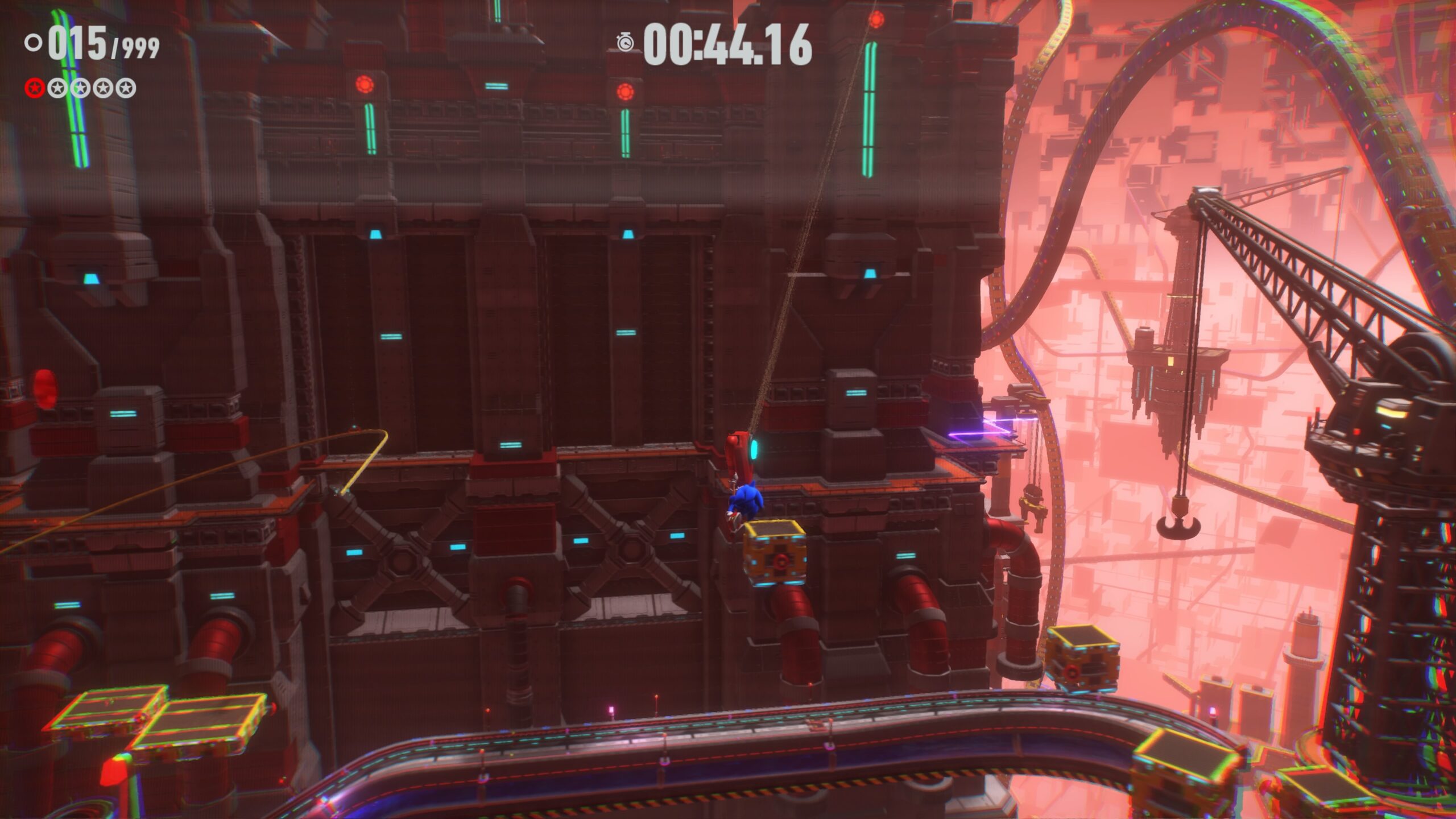
To face off with the enormous mechanical titans to save his friends, Sonic will have to collect the chaos emeralds in hopes of standing a chance against their wrath. Each of the seven emeralds is locked away and requires keys to break their seals. To get keys, Sonic must earn them by completing challenges within cyberspace levels.
The cyberspace levels are much more like traditional boost-style 3D Sonic stages or are 2D like the 16-bit entries. While there are a lot of them, it is disappointing that many of them are recycled stages from past games but without the theming that made them such a spectacle.
Getting to play the cyberspace levels requires gamers to go out and explore the islands to find them, but finding them isn’t enough. Sonic will need gears to unlock access to these levels and gears can be found all over the island by completing mini-challenges, defeating robots, or finding them.
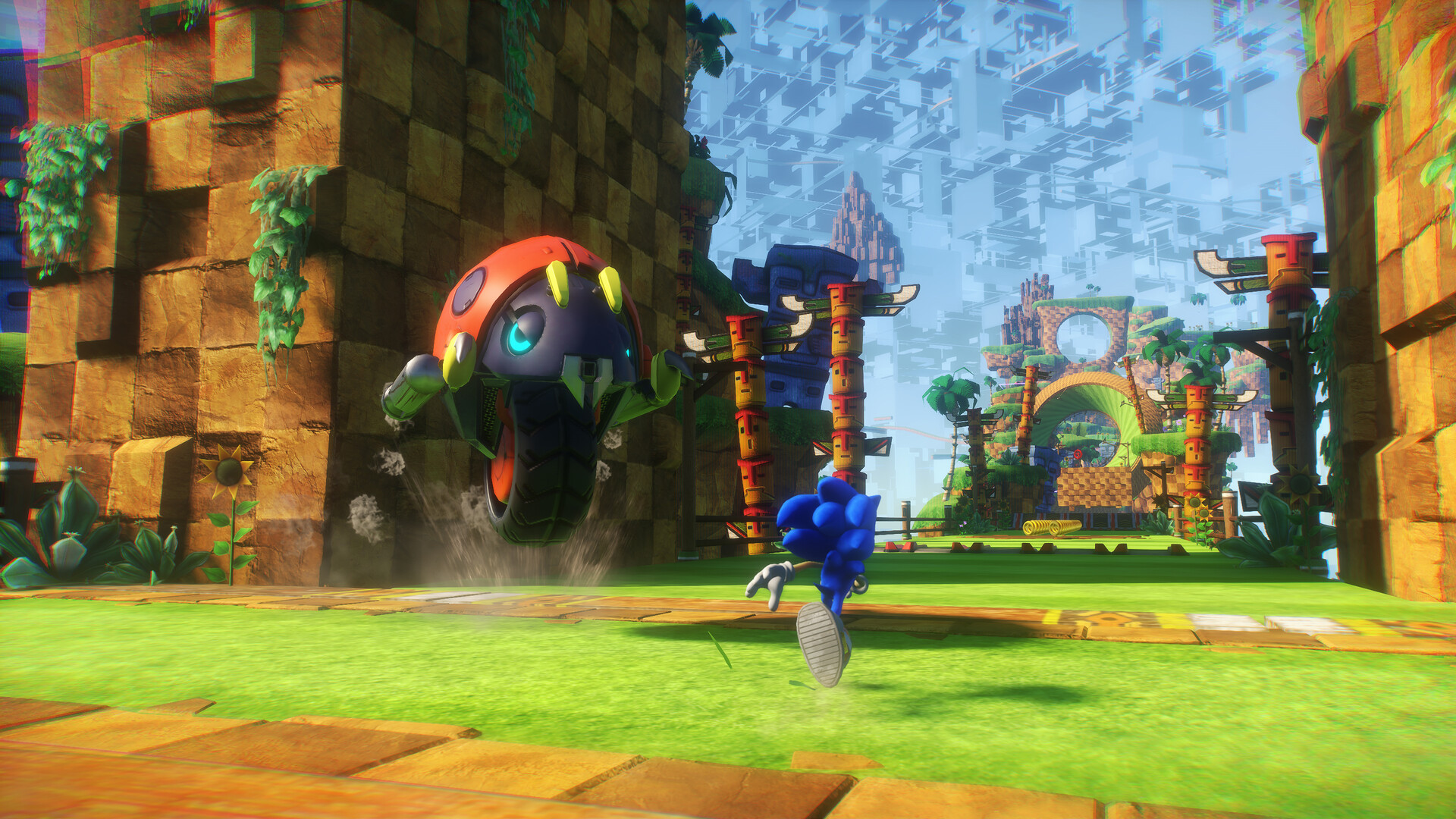
The “challenges”, are not really challenging at all. These are very light diversions at best and Sonic Frontiers makes the right call to keep them brief so that the game maintains a steady flow. These can range from having to do extremely basic actions, an easy time trial run, or running doing a quick-time event.
Sonic as an idea, is aimed at children and these challenges reflect that. For a lot of kids, Sonic is their gateway to the concept of “cool”. The battles with the large mechas are full of stylish, shonen-anime posing and over-the-top action with flashy and dazzling attacks.
Sonic Frontiers does all of this with a completely straight face, without any hint of irony or cynicism, which is refreshing. Characters are surprisingly serious and there are scenes that depict some gravitas where you see a side of them that you normally don’t.
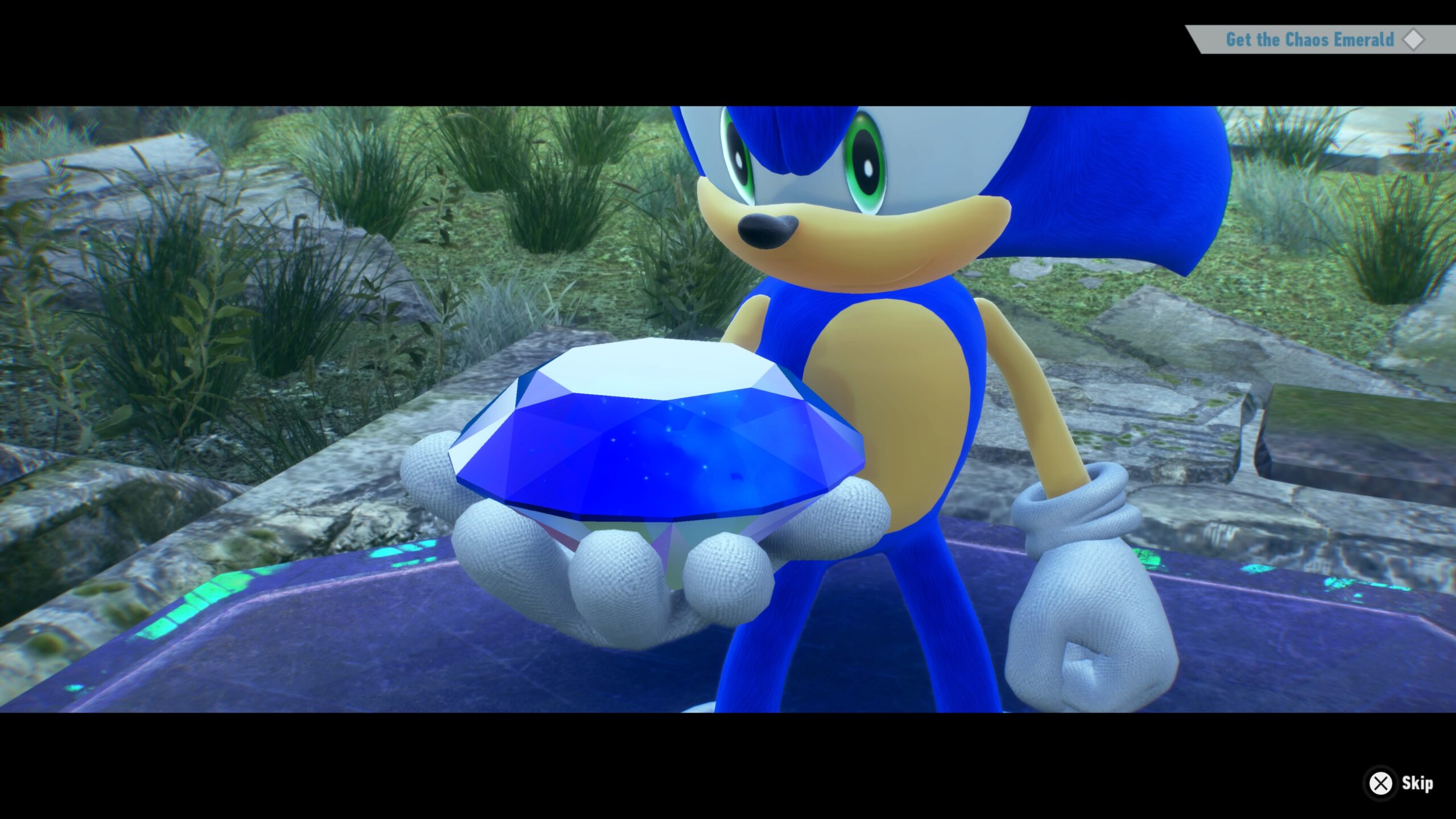
The first three islands are Sonic Frontiers‘ highpoint. The final two is where Sonic Team goes overboard with the scripted trigger points and the open-ended level design becomes more like a hub to 2D sections that are out in the open. These areas are also more barren with progression collectibles, making the final stretch of the game feel more padded out.
Due to the non-linear design of Sonic Frontiers, gamers are able to play most of the challenges or cyberspace levels in any order. There is never wasted space. The fast and fluid pace of how players can complete one challenge and move to another area, while also fighting a huge puzzle-based boss with no interruptions, makes the entire experience feel very satisfying in spite of the flaws.
Among the various items to find, is the purple coins that are used to participate in the fishing mini-game. This calming and relaxing side activity is worth every gamer’s time and is a great way to get extra keys, gears, or any items that boost Sonic’s stats.
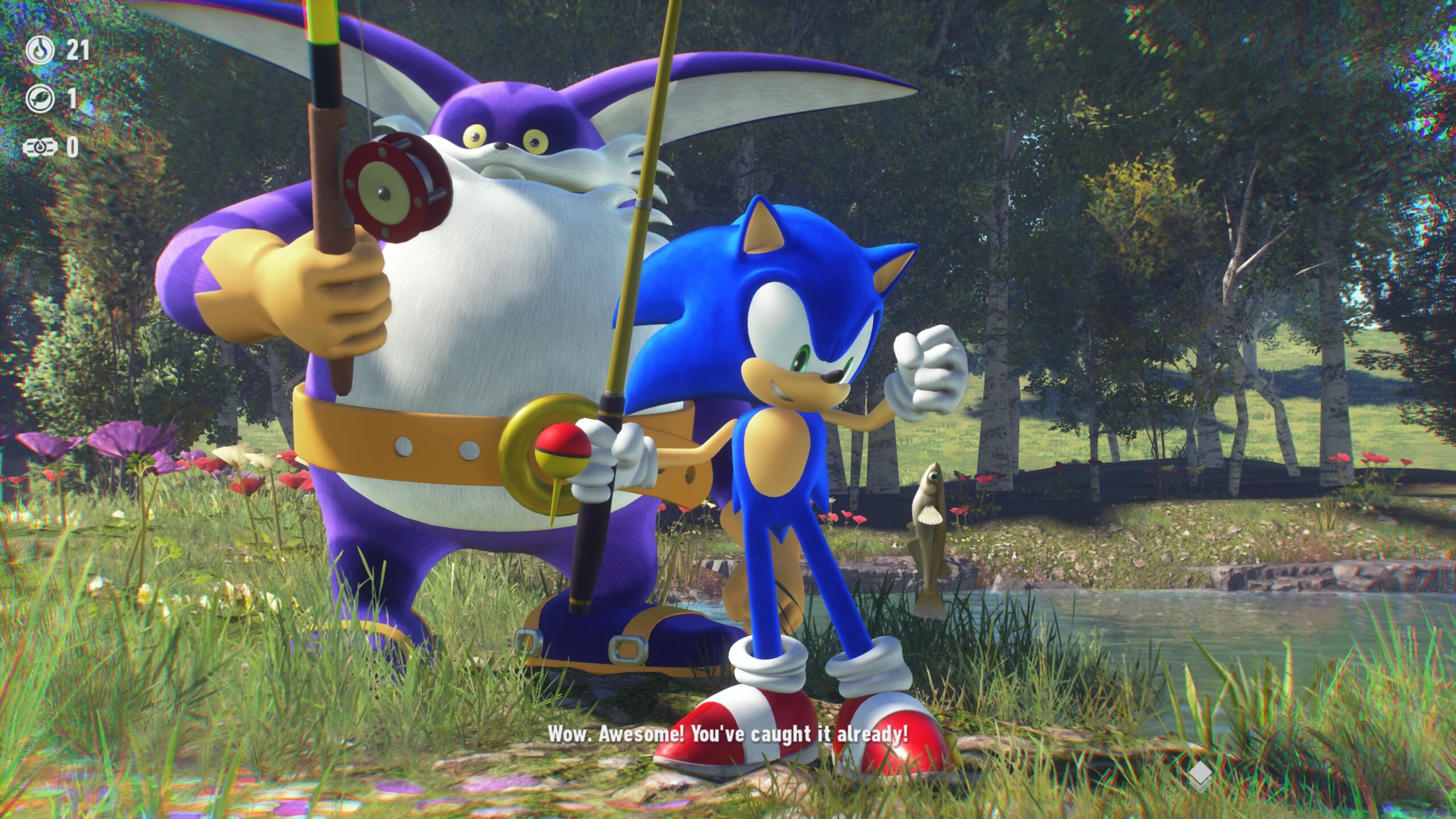
The music is a big surprise, with several tracks having awesome vocals that really charge the scene or boss battle. Influences are metal and EDM that sound like something out of Metal Gear Rising: Revengeance. The wistful and calming melodies used while exploring the islands are a piece that players will hear at great length, yet they never become repetitive.
Sonic Frontiers has some awkwardness to its playability and some questionable aesthetic choices with the sloppy asset placement, but amidst all the chaos- it’s an enjoyable experience. The way the game is structured keeps the player from dwelling on some of its stupid design and the incredible spectacle is utterly endearing.
Sonic Frontier’s kinesthetics are not perfect, but it is hard to not be engrossed by the intense sense of speed and be in awe by the visuals. Shockingly, this game aimed at children has a lot of respect for them. When the tutorials are done, there is no hand-holding and it is on the player to blaze their own trail.
Sonic Frontiers was reviewed on PlayStation 5 using a copy purchased by Niche Gamer. You can find additional information about Niche Gamer’s review/ethics policy here. Sonic Frontiers is now available for Windows PC (via Steam), Xbox One, Xbox Series X|S, PlayStation 4 and PlayStation 5.